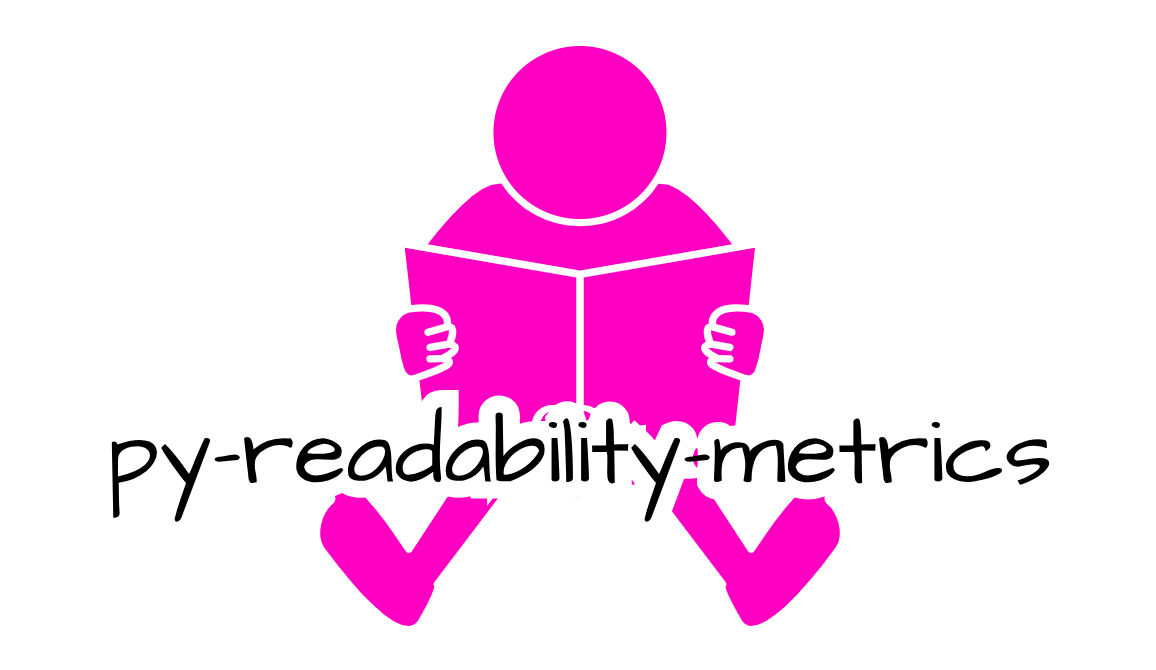Score the readability of text using popular readability metrics including: Flesch Kincaid Grade Level, Flesch Reading Ease, Gunning Fog Index, Dale Chall Readability, Automated Readability Index (ARI), Coleman Liau Index, Linsear Write, and SMOG. 📗
pip install py-readability-metrics
python -m nltk.downloader punktfrom readability import Readability
r = Readability(text)
r.flesch_kincaid()
r.flesch()
r.gunning_fog()
r.coleman_liau()
r.dale_chall()
r.ari()
r.linsear_write()
r.smog()*Note: text must contain >= 100 words*
- Flesch Kincaid Grade Level
- Flesch Reading Ease
- Dale Chall Readability
- Automated Readability Index (ARI)
- Coleman Liau Index
- Gunning Fog
- SMOG
- Linsear Write
All metrics provide a score attribute. Indvidual metrics provide additional properties to increased interpretability. See details below to capture per metric details.
Note: In all examples below r is:
r = Readability(text)The U.S. Army uses Flesch-Kincaid Grade Level for assessing the difficulty of technical manuals. The commonwealth of Pennsylvania uses Flesch-Kincaid Grade Level for scoring automobile insurance policies to ensure their texts are no higher than a ninth grade level of reading difficulty. Many other U.S. states also use Flesch-Kincaid Grade Level to score other legal documents such as business policies and financial forms.
call:
r.flesch_kincaid()example:
fk = r.flesch_kincaid()
print(fk.score)
print(fk.grade_level)The U.S. Department of Defense uses the Reading Ease test as the standard test of readability for its documents and forms. Florida requires that life insurance policies have a Flesch Reading Ease score of 45 or greater.
call:
r.flesch()example:
f = r.flesch()
print(f.score)
print(f.ease)
print(f.grade_levels)The Dale-Chall Formula is an accurate readability formula for the simple reason that it is based on the use of familiar words, rather than syllable or letter counts. Reading tests show that readers usually find it easier to read, process and recall a passage if they find the words familiar.
call:
r.dale_chall()example:
dc = dale_chall()
print(dc.score)
print(dc.grade_levels)Unlike the other indices, the ARI, along with the Coleman-Liau, relies on a factor of characters per word, instead of the usual syllables per word. ARI is widely used on all types of texts.
call:
r.ari()example:
ari = r.ari()
print(ari.score)
print(ari.grade_levels)
print(ari.ages)The Coleman-Liau Formula usually gives a lower grade value than any of the Kincaid, ARI and Flesch values when applied to technical documents.
call:
r.coleman_liau()example:
cl = r.coleman_liau()
print(cl.score)
print(cl.grade_level)The Gunning fog index measures the readability of English writing. The index estimates the years of formal education needed to understand the text on a first reading. A fog index of 12 requires the reading level of a U.S. high school senior (around 18 years old).
call:
r.gunning_fog()example:
gf = r.gunning_fog()
print(gf.score)
print(gf.grade_level)The SMOG Readability Formula (Simple Measure of Gobbledygook) is a popular method to use on health literacy materials.
call:
r.smog()example:
s = r.smog()
print(s.score)
print(s.grade_level)Linsear Write is a readability metric for English text, purportedly developed for the United States Air Force to help them calculate the readability of their technical manuals.
call:
r.linsear_write()example:
lw = r.linsear_write()
print(lw.score)
print(lw.grade_level)Contributions are welcome!





